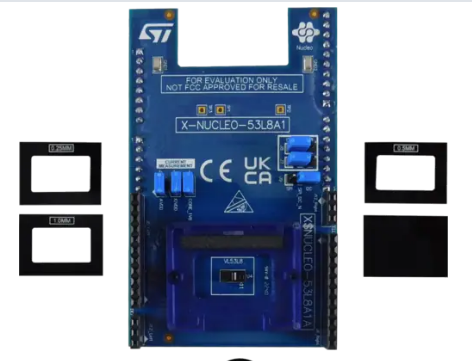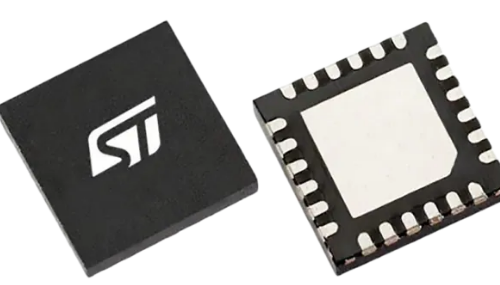- Ameya360 Component Supply Platform >
- Trade news >
- ST, Ams Sense 3D Trend
ST, Ams Sense 3D Trend
The comeback of STMicroelectronics (Geneva) has been widely reported in recent months. Testimony to the company’s revival lies in an upbeat set of recent financials and product portfolios. ST's first nine months revenue this year grew to $5,880 million from $5,113 million in the same period a year ago.
Ams (Premstaetten, Austria), a vendor of analog, mixed signal and sensor products, is also doing well. In fact, the company, although much smaller than ST in size, is closer to spectacular. In the first nine months this year, Ams’ revenue jumped by 42.5 percent to 593 million euros compared to the same period of 2016. Ams CEO insists this is not just a short-term spike. He is forecasting a compound annual revenue growth rate of “more than 40 percent” through 2019.
In iPhone X, Apple adopted leading-edge NIR imagers from STMicroelectronics, while deploying dot illuminators from Ams. Undoubtedly, both companies are profiting from these big design wins. More to the point, to frame the success of these two European companies as just a lucky break induced by the iPhone X factor would be an understatement.
Consider three big changes quietly brewing in Europe.
First, European microelectronics companies are finding their voice again. They have brought much-needed focus to their business with a big emphasis on such growth areas as “sensing” and “automotive.” That’s a big part of it.
Second, European chip vendors are applying a much finer level of analysis to strategy. Neither ST nor Ams is focusing broadly on the general sensor market. Each has identified “3D sensing” as the biggest growth segment of the sensor market, for which they are boldly taking on the complex technology challenges.
Third, Europe has never given up its passion for technology development. Neither ST nor Ams has totally abandoned manufacturing. Their in-house manufacturing capabilities are paying off now.
In his recent report, Pierre Cambou, imaging activity leader at Yole Développement, made the strongest case for ST.
Looking back, he said ST’s imaging division should have disappeared when Nokia lost its way [in the then newly emerging smartphone battle, and sold its handset business to Microsoft.] But it did not. He asked why.
Cambou credits the engineering teams’ resilience and creativity at ST. In his opinion, “the craziness of investing in Single Photon Avalanche Diode (SPAD) technology became the first step in maintaining life support to [ST’s] endangered [imaging] business.” He said, “Passion for science and technology is not always logical, nor overly business-efficient, but it creates a positive environment for trying new things and going beyond traditional barriers, where no competitor even exists.”
Cambou added, “STMicroelectronics has shown that innovation is not just a game for startups; large companies can also make the right moves.”
3D Sensing: ‘Mega trend’
The story of Ams is much different. In a recent one-on-one interview with EE Times, Ams CEO Alexander Everke discussed his company’s aggressive, but tightly targeted strategy, which has led to Ams’ successful entry into high-end segments of a certain sensor market such as light sensing.
Unlike valuation-driven M&A activities in recent years, particularly prevalent among Silicon Valley-based chip companies, Everke stressed, “Ams is focused on acquiring technologies, not the revenue.”
After Everke took the Ams helm January 2016, he acquired a string of companies with specific sensor technologies. They include: Cambridge CMOS Sensors Ltd (CCMOSS), a technology leader in micro hotplate structures for gas sensing and infrared applications; MAZet, a color and spectral sensing systems specialist; Incus Laboratories, an IP provider of digital active noise cancelation in headphones and earphones; high end optical packaging leader Heptagon; and Princeton Optronics, a provider of Vertical Cavity Surface-Emitting Lasers (VCSELs).
Everke laid out the “four pillars” of sensing technologies targeted by Ams: Optical, Imaging, Environmental and Audio. The company isn’t interested in traditional sensor markets such as motion sensing. “Those technology innovations are slowing down and they are getting commoditized,” he told EE Times.
Everke is enthusiastic about Ams’ 3D adventure. He called 3D sensing “one of the mega trends of our industry that will drive the market over the next 10 years.” In smartphones, industry 4.0, automotive and emerging medical applications, the imaging world is rapidly transitioning from capturing 2D information to 3D, said the Ams CEO.
ST, actively engaged in technologies for augmented reality and virtually reality, is also highly aware of the growing demand for 3D sensing. It also sees adding 3D sensing to UI as the key to improving interactivity.
Yole’s Cambou agreed. “Augmented reality has been the buzzword for the last two years, but part of market momentum still lies in the notion of interaction.” He explained that adding sensors to a smartphone expands its user’s capabilities. “With the development of new computing capabilities and ‘artificial intelligence,’ electronic devices’ perception is going further. The devices are not just recording inputs and outputs but — some would say autonomously — managing an ‘interaction’ with the world,” he said.
Leadership in optical sensor
Today, Ams is an undisputed world leader in optical sensors. It commands a broad portfolio in the optical sensing field, thanks to a host of acquisitions over the last 24 months. Its optical product portfolio includes ambient light, IR proximity, RGB and all associated combo sensors, according to Jérémie Bouchaud, director and senior principal analyst for MEMS and sensors at IHS Markit.
Ams has gotten where it is today partly because of a dominant supplier position in the leading smartphone markets — especially Apple and Samsung. Bouchaud told EE Times, “In particular, Ams is the only supplier of IR proximity sensors designed into iPhones until the iPhone 6 generation. Ams is also the sole supplier of the VCSEL assembly under the dot projector in the iPhone X as part of the True Depth system. Further, Ams is also the main supplier for the RGB/proximity sensors into Samsung’s flagship smartphones.”
IHS Markit estimates that Apple and Samsung accounted for 65 percent of the combined light sensor business of Ams and Heptagon in 2016.
So, who’s number two? That would be ST. Bouchaud observed that ST became the second largest light sensor maker in 2016 when it started to ship ToF sensors in the iPhone 7. ST displaced Heptagon’s IR proximity sensor slot, he added.
Ams is frank about its strategy to pursue the high-end market where the company can command higher prices. Consider digital ALS (ambient light sensors). Bouchaud noted, “Ams is shipping it to Apple at significant higher prices than the market average.” Ams has been able to do this, because “the performance and the quality of its ALS is valued” by customers, he added.
The acquisitions of MAZeT and Heptagon is also helping Ams pursue its high-end market strategy. Ams has been able to develop, for example, a spectrometer based on MAZeT technologies. With Heptagon, Ams is adding ToF sensors. “Both the ToF and on-chip spectrometer are selling for significantly higher prices than other light sensors,” Bouchaud observed.
Ams’ Heptagon acquisition is considered pivotal for the company’s future growth. Heptagon assets are helping to turn Ams into “a very interesting wafer level optical packing company,” Bouchaud noted. This gives Ams “a real advantage” when it builds complex assemblies such as the True Depth system in the iPhone, or future systems on chip spectrometer with both emitter and the detector within the same component, he explained.
Combo sensors, sensor fusion
So, are there any common threads among so-called four pillars of sensors — optical, imaging, environmental and audio sensing — Ams is pursuing?
Everke sees the company’s future on an “integration path” for its sensors. Take the example of combo sensors for imaging and spectrometer, he noted. “The video image you took of fruit can tell you how ripe they are.”
The combination of audio and environmental sensors is another example, although it feels like an unlikely combo. Everke said, “If you look at smartphones these days, holes on a handset are disappearing fast. Fewer holes can make a mobile phone safer and look nicer,” he said.
That said, you can’t completely eliminate holes because you still need a hole for a microphone. Now, that single hole on a smartphone becomes one of the most sought-after holes because beyond audio, such environmental sensors as temperature, pressure and air quality all want to use it. “It’s only natural to develop an audio/environment sensor that fits in the single hole,” Everke said.
Such combo sensors aren’t pie-in-the-sky. They are active current projects for Ams, he said.
Further, in automotive, the combination of spectrometer, imaging and 3D sensing could help improve airbag deployment safety, according Ams. The combo sensor can not only identify the driver’s and a passenger’s face, it can also adjust the position of airbags as they deploy, matching the height and proximity of the people in the car.
Asked about Ams’s sensor combo scenarios, Bouchaud said, “The idea of the imaging and spectrometer combo and associated sensor fusion is very interesting. I don’t see any other companies as ideally positioned as ams for this.” Meanwhile Bouchaud remained skeptical of audio + environment combo sensors. He said they might find some traction in wearables but not in the smartphone market.
“These are typically completely different teams at smartphone OEMs who handle the audio (including microphones) on the one hand and the sensor (motion, light, environment) on the other hand. These teams usually don’t know each other.”
Bouchaud, however, suggested, if the demand is there, “ST, Infineon could offer such combo sensors,” he said. “Microphone companies like Knowles, AAC and others could offer such combo sensors by purchasing the environment sensor dies, for example, from IDT.
Articulating a vision
Ams’ journey to become a sensor company had already begun, even before Everke arrived at Ams as CEO. In the summer of 2015, Ams acquired NXP’s monolithic environmental CMOS sensors. In December, 2015, Ams also bought CMOSIS, a leading supplier of high-end area scan and miniature medical image sensors. But it was Everke who articulated a vision for Ams’ four-pillar sensor strategy (Optical, Imaging, Environmental and Audio) and got the company’s board excited. The board approved Everke’s shopping spree for critical sensor technologies and agreed to invest in R&D.
Arriving at Ams, Everke said he found the company’s business “too broad.” He saw “active and precise portfolio management” as his top priority. He sold off or closed business units that would no longer fit the Ams portfolio, even if they were doing well. Examples include Ams’s divesture of NFC and RFID reader product lines to ST. Last month, Ams also divested LED backlight technology and product portfolio to Dialog Semiconductor through an asset transaction.
Everke, who is German, has lived through all the ups and downs of the European microelectronics industry over recent decades. He first worked at Siemens, then at Infineon and later moved to NXP. Asked what lessons he learned from his experience at major European microelectronics companies, Everke said, as a leader, “It’s very important to make a decision, whether your team likes it or not.” He acknowledged European companies often face an institutional reluctance — among their employees — to make changes. There tend to be endless discussions as to what happens next, he said. “Of course, you don’t want to lose good people along the way… So it’s critical that you spend time communicating your vision with them.” But in the end, “You have to do the right thing,” said Everke. “If you don’t transform, you’ll never be able to push your company to the next level."
According to IHS, Ams is ranked 11th among sensor makers (excluding image sensors) in 2017.
Online messageinquiry
- Week of hot material
- Material in short supply seckilling
| model | brand | Quote |
|---|---|---|
| MC33074DR2G | onsemi | |
| TL431ACLPR | Texas Instruments | |
| CDZVT2R20B | ROHM Semiconductor | |
| BD71847AMWV-E2 | ROHM Semiconductor | |
| RB751G-40T2R | ROHM Semiconductor |
| model | brand | To snap up |
|---|---|---|
| TPS63050YFFR | Texas Instruments | |
| ESR03EZPJ151 | ROHM Semiconductor | |
| BP3621 | ROHM Semiconductor | |
| STM32F429IGT6 | STMicroelectronics | |
| BU33JA2MNVX-CTL | ROHM Semiconductor | |
| IPZ40N04S5L4R8ATMA1 | Infineon Technologies |
- Week of ranking
- Month ranking
Qr code of ameya360 official account
Identify TWO-DIMENSIONAL code, you can pay attention to


Please enter the verification code in the image below:


























